From Bend, Oregon, and the nearby resort community of Sunriver, winter enthusiasts have exceptional recreational access to numerous sno-parks. The parks dot the Cascades Lakes Highway and Edison Ice Cave Road (FR-45), respectively, in the Deschutes National Forest.
These two main roads converge near Mt. Bachelor’s base, the 6th largest ski resort in the U.S., with over 4,300 acres of lift-accessible terrain and an average snowfall of 462 inches (1173 cm) per year. Some years, the ski resort closes after Memorial Day weekend, even though there is still a skiable base.
But, skiers and snowboarders aside, these roads also provide snowshoers and Nordic skiers endless opportunities to explore the national forest and Cascade Mountains.
The Beginning of Dedicated Snowshoe Trails
For snowshoers, there are over 23 miles (37 km) of dedicated snowshoeing trails in particular. These trails are a unique aspect of this National Forest due to the vision of Dr. James “Jim” Davis, best known to the Forest Service as Dr. Snowshoe.
Davis and his wife retired to Bend in the mid-1980s from Milwaukie, Oregon. An avid skier, cyclist, and hiker, Davis took up snowshoeing and would stride out from a sno-park, trying to avoid tromping on Nordic skier tracks.
He soon found that others were following his tracks. So, Davis contacted the Forest Service to inquire about establishing dedicated snowshoer trails. The trails would radiate out from the various sno-parks, connect with established warming shelters, and occasionally intersect with the cross-country skier trails.
The Forest Service was on board with a small caveat: Davis would do the majority of the work.
The Routes Come To Be
And so began the adventures of Davis and a small band of volunteers. The group started with the Virginia Meissner Sno-Park. They established a route through old-growth hemlock forests and stands of young ponderosa pine that connected to the Meissner Shelter. “We’d flag a route, and then the Forest Service would come out to inspect and either approve the route or make some minor adjustments,” said Fred DeCook, one of Davis’s volunteers.
At first, Davis paid for the small blue diamond trail markers, nails, and reflective snowshoer icons. But then, the Central Oregon Nordic Club (CONC) stepped up to cover those expenses.
In addition to establishing the trails, Davis and CONC agreed to provide stewardship services, brushing shrubs, clearing deadfall, and replacing trail markers as needed. Before Davis passed away in 2014, Bob Timmer, CONC volunteer, took up the torch of organizing the trail maintenance on 23.5 miles (38 km) of dedicated snowshoe trails at the Meissner, Swampy Lakes, Edison, and Dutchman Flat sno-parks.
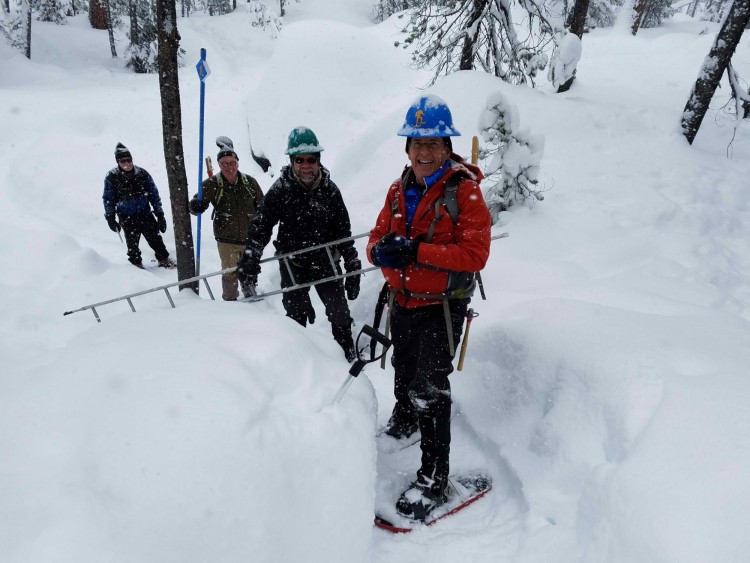
Bob Timmer leads the volunteer snowshoe stewardship crew into the woods. Photo: Central Oregon Nordic Club
Snowshoeing Oregon’s Sno-Park Trails
Snowshoers new to the area can download trail maps compatible with the Avenza Maps app to navigate through the woods as paper maps are no longer available at the trailheads.
Trail intersections are well-marked at these sno-parks. Furthermore, most, except for Dutchman Flat, have warming shelters with stocked firewood (again, thanks to CONC) for ‘shoers and skiers to warm up and enjoy a break.
Before heading out to one of the sno-parks, winter enthusiasts must purchase an Oregon Sno-Park Parking Permit (California and Idaho passes are acceptable). This pass provides for plowing, restrooms, and access and must be displayed from November 1 – April 30. Costs are $4 for one-day use, $9 for three-day consecutive use, and $25 for an annual pass. The parking permits need to be purchased at an in-town vendor or online (DMV2U) as there aren’t any pay stations at the sno-parks.
If you need gear, several local shops, including REI, Pine Mountain Sports, Gearfix, Mountain Supply, and Sunriver Sports, rent snowshoes and poles.
Although these sno-parks offer marked trails, adventurous souls can strike out cross country to explore untrampled snow. Bring your navigational skills and a good map. Otherwise, you’ll endure the ire of the local search and rescue folks. “Snowshoeing is often the gateway into many winter sports, and as more and more people want to enjoy the outdoors, they turn to snowshoeing as a slightly cheaper option to resort skiing or Nordic skiing,” added Jessica Larson, Deschutes National Forest trail volunteer coordinator.
Read More: Spring Snowshoeing Near Bend, Oregon
Here are a few highlights of sno-parks and trails in the area.
Virginia Meissner Sno-Park
Virginia Meissner Sno-Park, about 14 miles (22.5 km) from downtown Bend, offers some easy loops for beginner snowshoers. Moreover, the view from the Meissner Shelter towards the Cascades is spectacular.
This is the first sno-park along the Cascade Lakes Highway and can be busy with Nordic skiers and ‘shoers, so best to plan for an early or late afternoon departure.
As with any sno-park north of the highway, such as Swampy, Vista Butte, and Dutchman Flat, these are off-limits to dogs. Those sno-parks south of the Cascades Lake Highway, such as Wanoga, Edison, and Kapka Butte, are open to dogs.
Read More: 2013 National Snowshoe Championship at Virginia Meissner Sno-Park Draws Record Crowd
Edison Sno-Park
Those with canines will appreciate the dedicated snowshoe trails at the Edison Sno-Park located along the Edison Ice Cave Road or FR-45, about 12 miles (19 km) from Sunriver.
This “electric” area honors Thomas Edison and Nikola Tesla with trails and shelters such as the High Voltage Trail, Light Bulb Loop, AC/DC shelter, and Edison Shelter.
The trails cross through ancient lava flows and old-growth forests, making for some varied terrain and interesting crannies to explore. Some of the trails are mixed-use. Please be sure to maintain winter hiking etiquette.
Todd Lake Loop
One of the classic snowshoe hikes in the area is the loop out to Todd Lake, named after early pioneer John Todd. The pioneer’s Farewell Bend Ranch was located along the Deschutes River near the current-day Old Mill District.
This trail from either the Dutchman Flat Sno-Park or Mt. Bachelor Nordic Center (see Mt. Bachelor’s website for permit information) leads through old-growth mountain hemlocks and killer views of South Sister and Broken Top to the glacially-carved Todd Lake. Though no shelter exists along this trail, the lake makes for a great lunch destination. Just remember to guard your sandwich from marauding camp robbers, a.k.a gray jays.
Depending upon snowfall, speed, and starting point, the loop is 4-5 miles (6-8 km) long and offers the best views of South Sister, Broken Top, and Mt. Bachelor. The Dutchman Flat Sno-Park is about 21 miles (34 km) from Bend.
Read More: High Country Trails Near Bend, Oregon
Après-snowshoeing
Selecting a post-shoeing destination in Bend is like visiting a candy store with a sweet-tooth craving. Known as Beer Town, USA, there are over twenty breweries. Moreover, you’ll find numerous restaurants and food cart villages that serve up award-winning IPAs and tasty treats. The decision of where to go is as challenging as breaking trail through thigh-deep snow all day long. Seriously. You can’t throw a snowball in Bend without hitting some great pre-or post-shoeing hotspot.
The Deschutes Brewery, Bend’s first, offers pub fare and award-winning brews. Worthy Brewing on the east side of town has a Hopservatory. Here, you can drink a beer and scope out planets and nebula. Also, McMenamin’s Old St. Francis School and Hotel is an eclectic spot complete with a pub, scotch bar, movie theater, soaking pool, and hotel with a “hidden” broom closet bar.
Or maybe it’s appetizers or dinner at Greg’s Grill in the Old Mill District watching the Deschutes River slide by and contemplating the area’s lumber mill history.
For those heading back to Sunriver, there’s Sunriver Brewing and Café Sintra for post-fun-in-the-snow delights. Or, for a funkier atmosphere, try Big Belly Burger Deli in the Sunriver business park. You won’t go home hungry!
Read More:
Apres Snowshoe: A First-Timer’s Guide
Central Oregon: A Beer Lover’s Paradise
Mt. Bachelor Area Facts
Location: 22 miles (35 km) west of Bend, Cascade Lake Highway (elevation: 6,340 feet/ 1932 m)
Snowshoe Trails: 23.5 miles (38 km) of dedicated snowshoe trails at various sno-parks
Average annual snowfall: 462 inches (1173 cm)
For more information, visit Central Oregon Nordic Club, Mt. Bachelor Ski Resort, and Visit Bend.
What about you? What are your favorite sno-parks in trails in central Oregon? Were you familiar with the history of the area? Please share your thoughts with us in the comments below.
Read Next:
Views Worth Hiking For In Central Oregon
Outdoor Enthusiasts Unite! An Epic Oregon Experience
Central Oregon Offers A Plethora Of Snowshoeing Destinations
Snowshoeing For Beginners: The First-Timer’s Guide


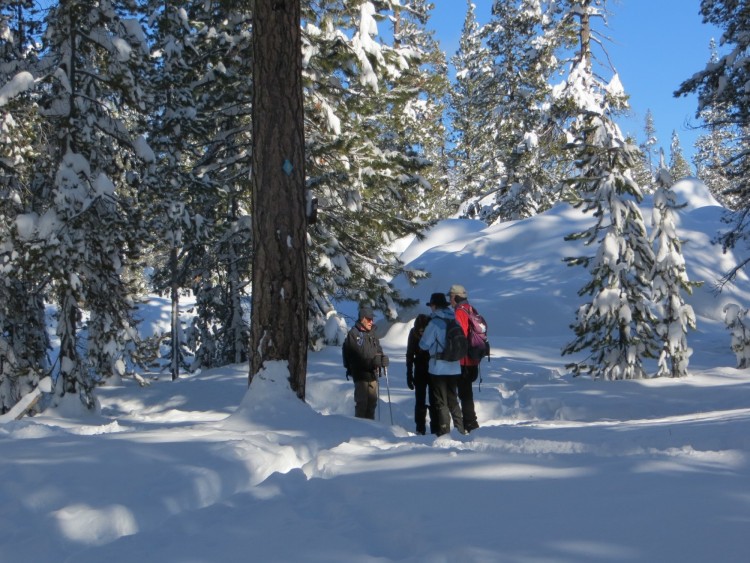




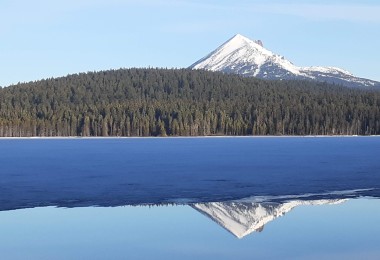

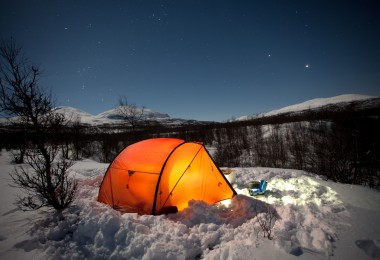
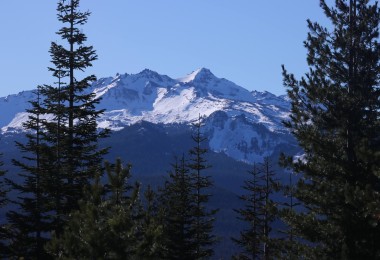

Leave a Comment